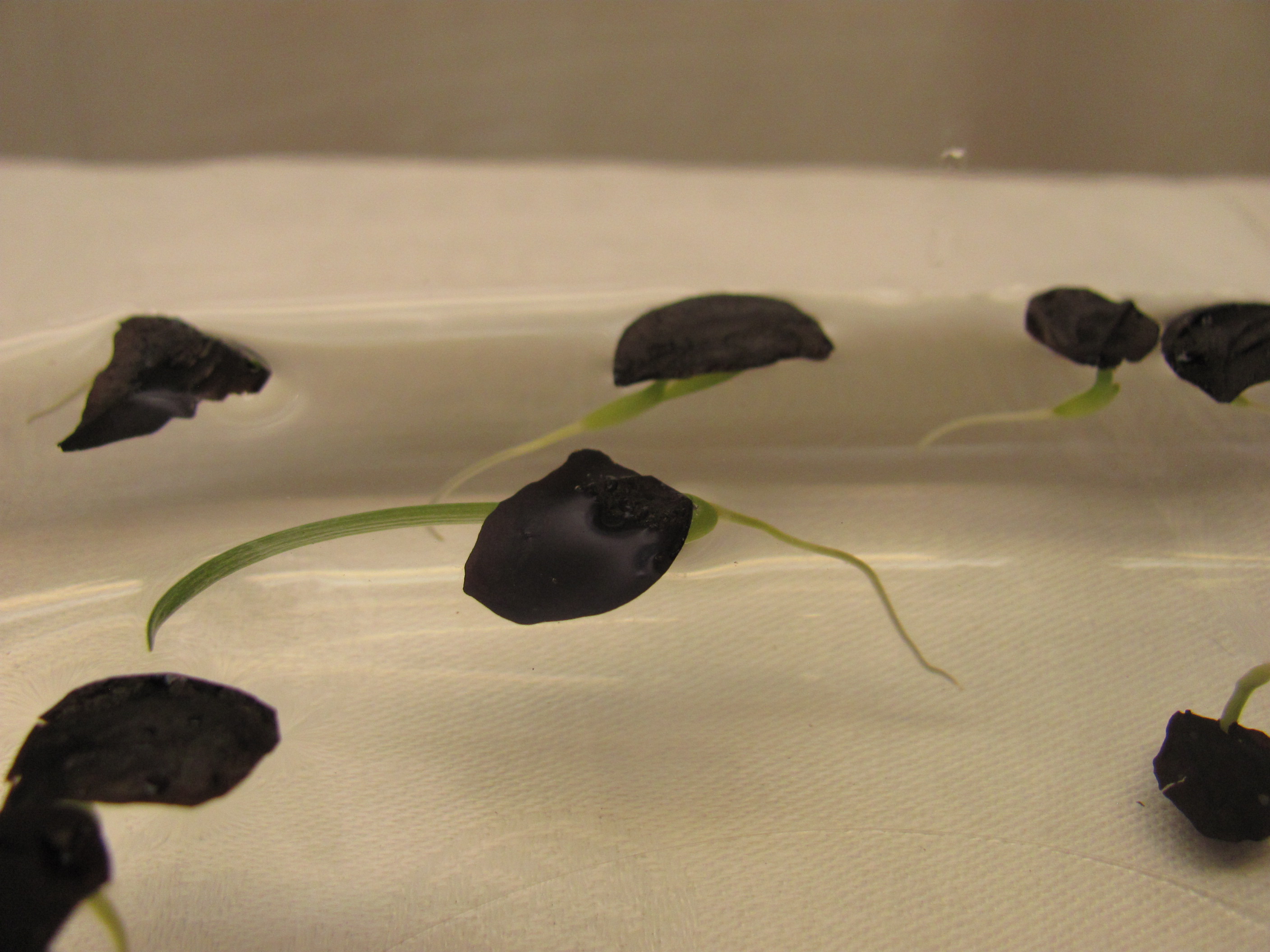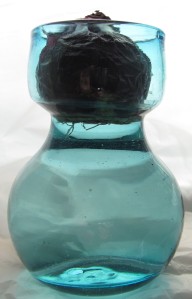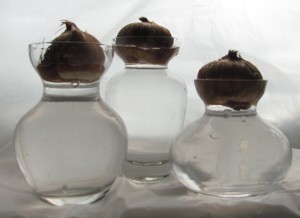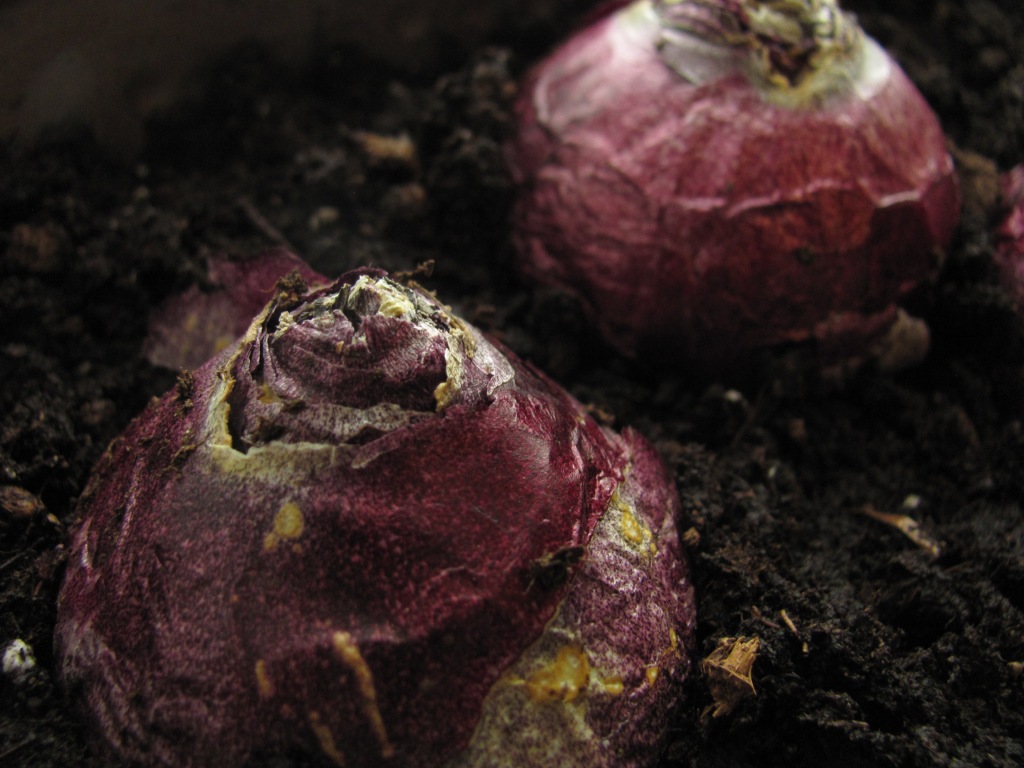
Spring gardening starts indoors: bulb forcing and vegetable seedlings
Published in the Wyoming Tribune Eagle Mar. 5, 2022.
By Barb Gorges
March is the time of year to ignore garden news from balmier parts of the country, especially Facebook posts with greening landscapes with bright flowers and ripening vegetables. But there is plenty going on here—indoors.
Bulb forcing experiment
The flowers I see on my windowsill late winter are usually phalaenopsis orchids and amaryllis.
This year, I also have bulbs I’m forcing—the ones I couldn’t find time to plant last fall, threw in the fridge in early November and took out and potted in late January. After they bloom indoors, I will plant them outside, when the soil thaws.
These weren’t bulbs typically recommended for forcing, like hyacinth. Now I see why. Iris reticulata, the rock garden iris, put up tall spikey, grassy leaves (that our cats chewed a bit before I put them out of reach), with the blooms hiding in the leaves. In the garden, the flower stems would be short and the leaves shorter. I blame the low-e glass in our windows for the missing wavelengths affecting growth.
The species tulips, delicate little things from which typical tulips are descended, got leggy, too. But at least the flowers were above the leaves. They started blooming at the very end of February, adding a touch of hope to those below-zero days.
Siberian squill also grew leggy—and then fell over, its little blue flowers never opening quite like they do in the patch I have in the backyard, which blooms in late April.

Vegetables and other annuals
March is time for planning your summer garden.
Thinking about growing vegetables and annual flowers? If you don’t want to dig up lawn and or weeds, consider containers. A tomato plant will need at least a 5-gallon bucket with plentiful drainage holes. Fill it half with potting soil and half with compost. Squeeze in a few flowers in larger containers.
Raised beds can be built on top of existing lawn or weeds. To suppress aggressive weeds before filling it with weed-free garden dirt and compost, you might want to put down a layer of cardboard first. But if it’s a shallow raised bed, sides less than 18 inches, the cardboard might cramp the vegetable roots.
One advantage to container gardening is that you can change the location if you discover your tomato plant isn’t getting at least 6 hours of sun, is getting too hot mid-afternoon, is farther than you want to drag a hose, is in too much wind, or is too far from the house.
Unless you have a hoop house (affordable substitute for a greenhouse), pick short season vegetable varieties suited to our short growing season. Seed packets will show “days to maturity” so look for vegetables that will give you edibles in under 90 days. The count starts when you transplant a seedling after the average last day of frost, May 25. The date of our average first frost is September 20. A 55-day tomato will give you fruit by the end of July or beginning of August.
When figuring out when to start seeds indoors, count back from May 25 and allow about 6-8 weeks or whatever the seed package says.
Some of the best tomatoes for our area will be available as transplants at the Laramie County Master Gardeners plant sale May 14 at the Event Center at Archer but wait to safely plant them.
Whenever you “up pot” or transplant almost any plant—annuals, perennials, shrubs, trees—the latest advice is to gently remove as much old soil from the roots first so that the plant will establish faster in its new location.
Forget starting plants in peat pots. You are supposed to be able to pop the whole pot and plant into the garden but here in Cheyenne, you will discover by fall few roots ever penetrated the peat barrier.
Start thinking about how you will protect your veggies from hail. If you are growing intensively in a container or raised bed, you can knock together a hail guard. It looks like a card table that stands taller than the plants, but the playing surface is hardware cloth, a rough wire mesh.
To be a successful vegetable grower, make a commitment to check your plants every day. Catching pest and disease problems early means you have time to get horticultural advice from the Laramie County Extension office or the Cheyenne Botanic Gardens.
Every day, pick out the tiny weeds. You’ll hardly disturb the soil and all the hardworking microorganisms in it. Cut large annual weeds off at the soil surface instead of pulling them. A couple inches of mulch keeps most weeds from sprouting and keeps the soil moist longer.
Gardening can contribute to mental health, but only if you spend time in the garden with your plants.




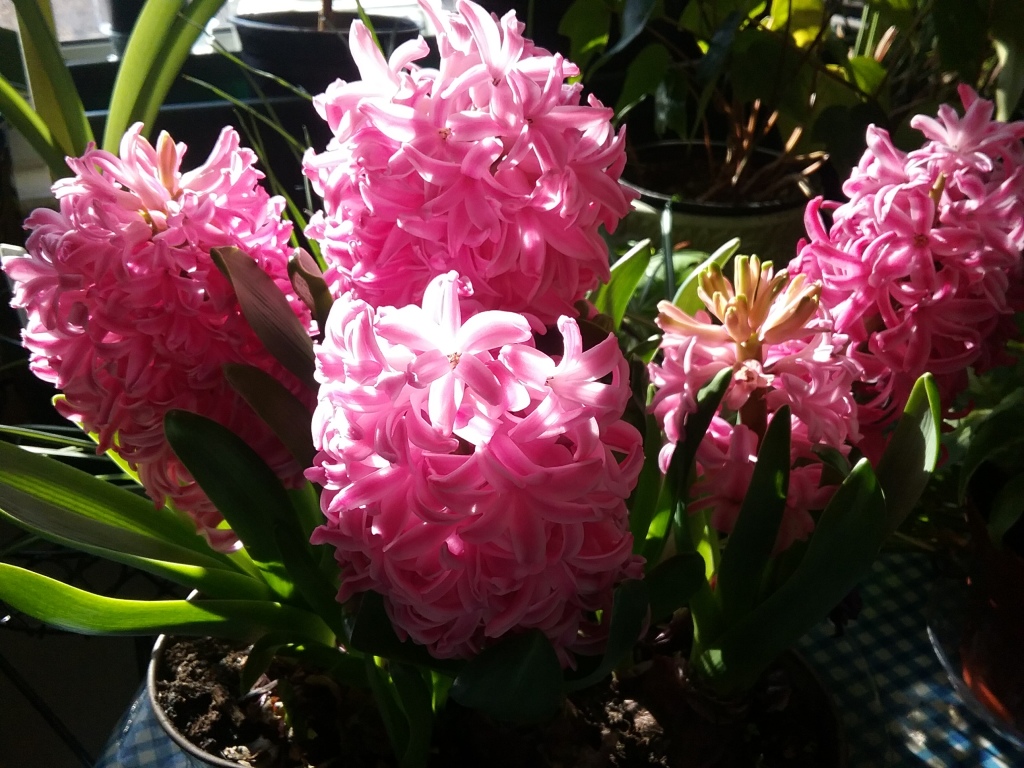
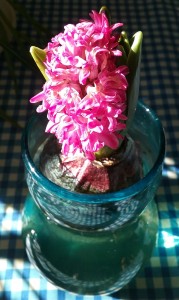


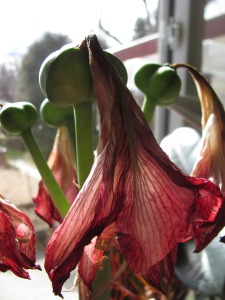 Amaryllis
Amaryllis
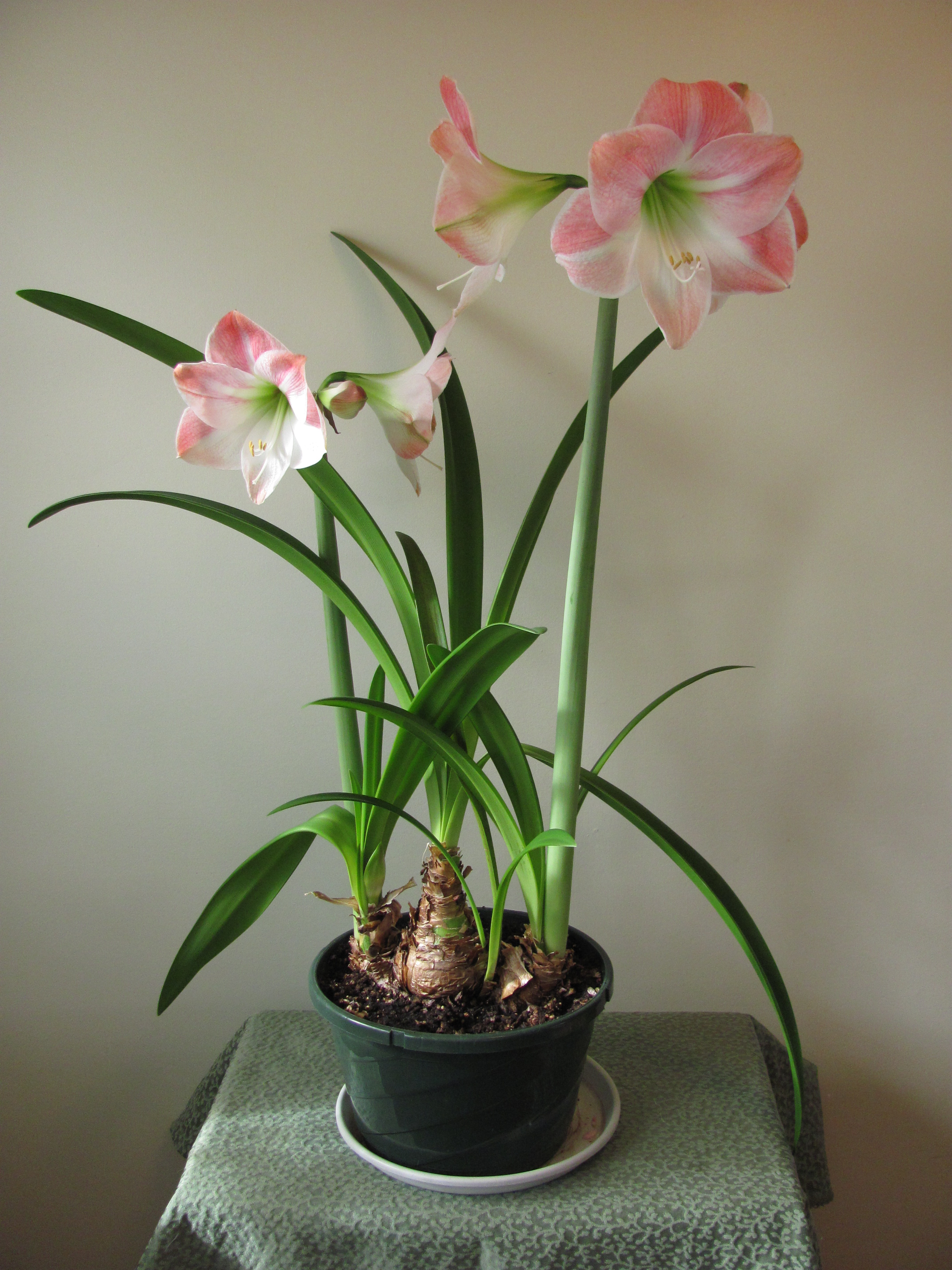
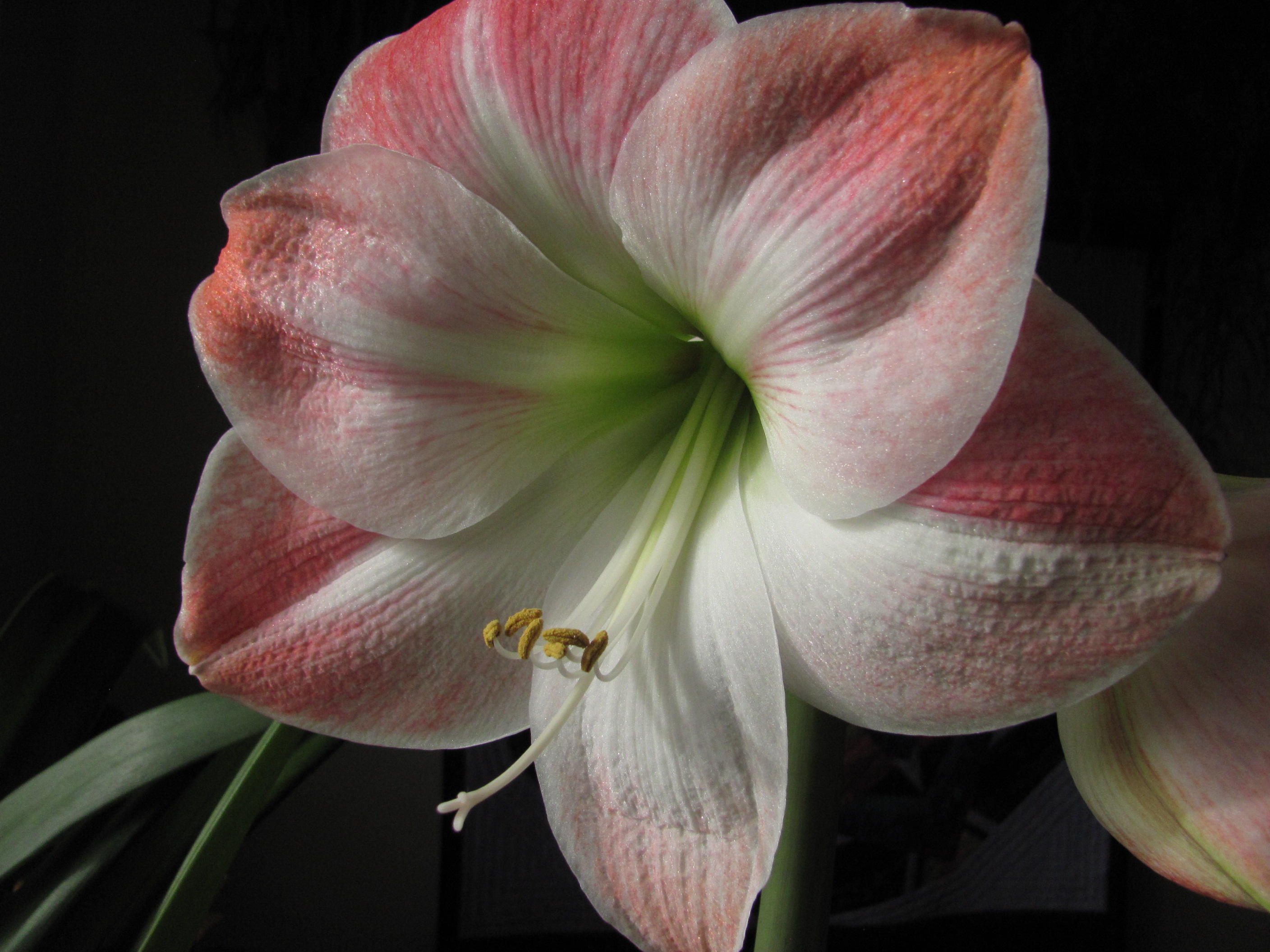
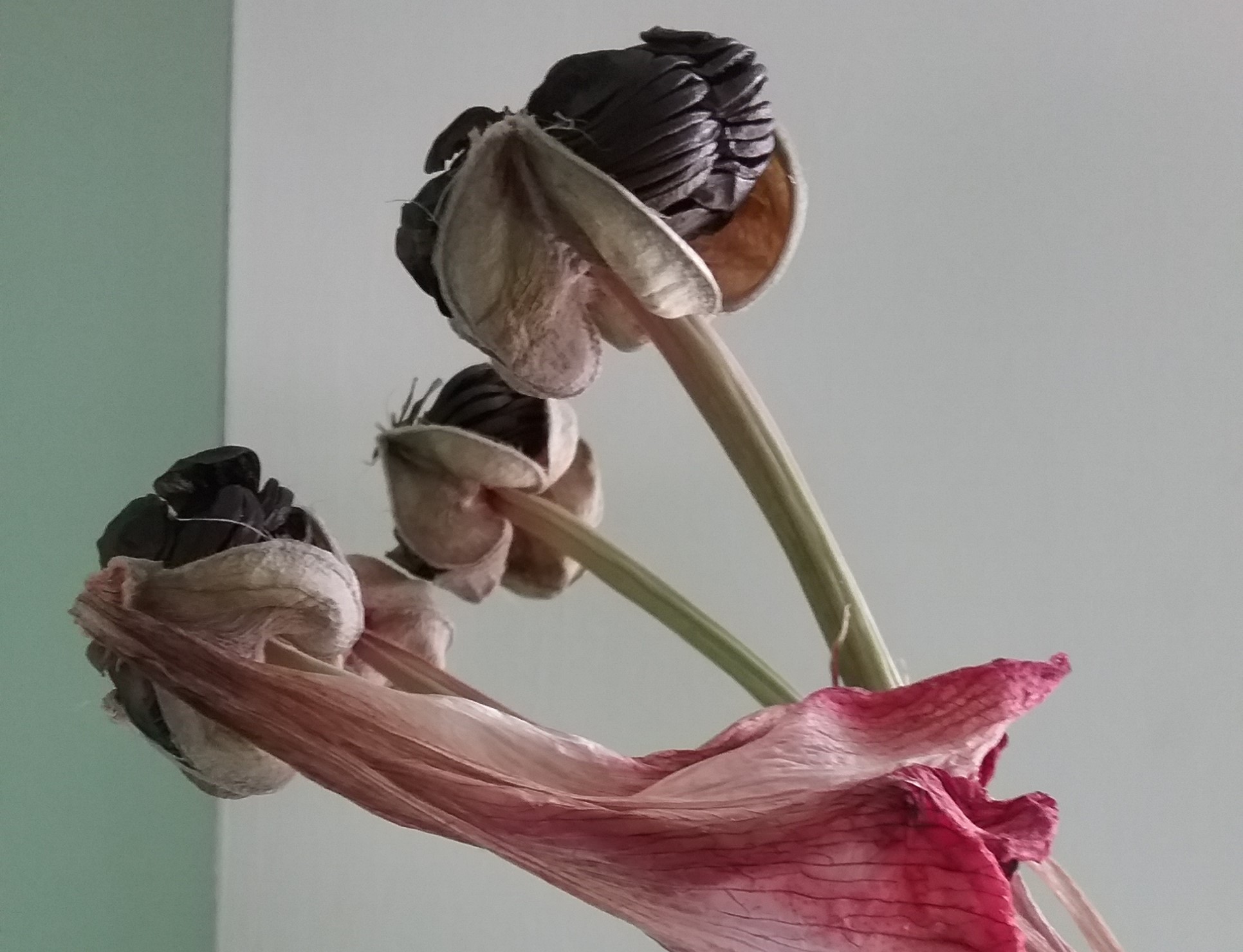 If you are successful, the ovary will begin to swell right behind the flower petals. A three-lobed pod will develop. Leave it on the flower stem. When it turns brown, it will split open and you can collect the seeds.
If you are successful, the ovary will begin to swell right behind the flower petals. A three-lobed pod will develop. Leave it on the flower stem. When it turns brown, it will split open and you can collect the seeds.